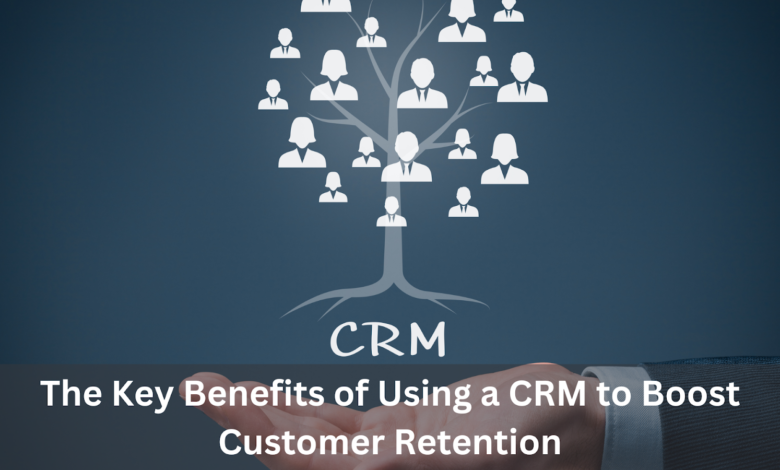The Key Benefits of Using a CRM to Boost Customer Retention

Did you know that increasing customer retention rates by just 5% can boost profits by 25% to 95%?
In today’s competitive business world, retaining customers is crucial for sustainable success. While acquiring new customers is important, true growth stems from keeping them satisfied and engaged.
This article explores how Customer Relationship Management (CRM) systems have transformed business approaches to customer relationships. It delves into strategies for enhancing customer retention, emphasizing the pivotal role of CRM in fostering lasting customer loyalty.
How CRM Systems Revolutionize Customer Relationships
CRM systems centralize and analyze data, creating a 360-degree view of customer interactions, preferences, and needs. By consolidating purchase history, communication records, and demographics, CRMs enable personalized, data-driven strategies. They streamline support, automate workflows, and foster proactive communication to build trust and loyalty.
For businesses that value simplicity and efficiency, a straightforward CRM solution can help businesses manage relationships effectively without overwhelming their teams. Simplest CRM offers a user-friendly approach to managing customer data and streamlining workflows. Ultimately, CRMs revolutionize relationships by turning insights into meaningful actions that drive long-term customer satisfaction and retention.
Enhanced Customer Understanding and Personalization
Modern businesses are no longer playing a guessing game with customer preferences. CRM systems provide comprehensive customer profiles that consolidate crucial data points:
| Data Type | Significance | Impact |
| Purchase History | Tracks buying patterns | Increase in retention |
| Interaction Records | Captures customer communications | Enables personalized experiences |
| Demographic Information | Provides deeper customer insights | Improves targeted marketing |
Segmentation
Personalization isn’t just a buzzword—it’s a proven strategy for customer engagement. CRM tools enable advanced customer segmentation by grouping customers based on their behaviors and preferences.
This enables businesses to create targeted marketing campaigns that resonate with specific segments and deliver more relevant communication.
Improved Customer Service and Support
CRM systems transform customer support by shifting from a reactive to a proactive approach. By centralizing customer information, support teams can quickly access relevant details, enabling them to address customer needs more efficiently.
Centralized data helps agents anticipate issues, offer personalized solutions, and resolve problems before escalation. Additionally, CRM tools provide real-time updates on customer inquiries, enhancing the team’s ability to provide timely and informed assistance.
Enhanced Support Processes
CRM systems make customer support faster and easier. They handle simple, repeated tasks automatically, so support teams can focus on solving important problems. This helps fix issues quickly and makes customers happier.
CRM systems improve collaboration across teams. By sharing information, everyone can help solve customer problems faster and give better support.
Proactive Engagement and Communication
Communication is the heartbeat of customer retention, and CRM systems facilitate proactive engagement by automating reminders and notifications. These tools help businesses stay on top of key touchpoints, ensuring timely updates and offers for customers.
Automated reminders also allow businesses to reconnect with customers at the right moments, enhancing the overall customer experience and keeping the relationship active.
Consistent Communication
CRM systems enable consistent follow-ups, ensuring businesses maintain regular contact with customers. By streamlining communication processes, businesses can deliver personalized messages that resonate with individual preferences. This consistency fosters trust and strengthens customer loyalty, ultimately improving retention rates over time.
Increased Sales Through Intelligent Strategies
Sales-Driven Insights
CRMs are powerful tools for increasing sales by providing valuable insights into customer purchase histories. By analyzing past purchases, businesses can identify trends and preferences, enabling them to offer more relevant products or services to their customers.
These insights help businesses understand the full scope of customer needs, anticipate future buying behavior, and develop tailored strategies to increase customer lifetime value. Additionally, tracking purchase history allows businesses to monitor customer satisfaction and adjust offerings accordingly.
Cross-Selling Opportunities
One of the key benefits of CRM systems is the ability to identify cross-selling opportunities. By understanding customer needs and preferences, businesses can strategically offer complementary products, enhancing the customer’s experience while driving additional revenue.
CRMs can also alert sales teams to potential cross-sell situations during customer interactions, enabling them to present relevant alternatives at the right moment. This proactive approach helps increase sales while strengthening customer loyalty by providing value-added solutions.
Targeted Promotions
CRM systems also help create targeted promotions by segmenting customers based on behaviors and preferences. These tailored promotions ensure that businesses can deliver relevant offers to the right customers, increasing the likelihood of conversions and boosting sales.
By using data-driven insights, businesses can design personalized campaigns that resonate with specific customer segments, optimizing marketing efforts. CRM tools also enable businesses to track the performance of these promotions, refining future strategies and maximizing ROI.
Building Customer Loyalty and Long-Term Value
CRM systems help businesses integrate loyalty programs that reward customers for continued engagement. By tracking customer behaviors and preferences, CRMs allow businesses to create tailored incentives that encourage repeat purchases and long-term loyalty.
These programs foster deeper connections with customers, making them feel valued and appreciated.
Preventing Customer Churn
CRM systems also enable businesses to monitor customer satisfaction and track lifetime customer value. By analyzing engagement patterns and satisfaction levels, businesses can predict potential churn and take proactive measures to retain at-risk customers.
Early intervention with targeted communication and offers helps prevent churn and sustain long-term customer relationships.
Data-Driven Decision Making
Actionable Insights Through Analytics
CRM systems turn big amounts of data into useful information. They help businesses find patterns and trends. This makes it easier to make smart decisions about customers and plans.
With CRM systems, businesses can also see what works and what doesn’t. For example, they can track which products are popular and which need improvement. This helps them make better choices to grow their business.
CRM tools also show customer habits, like when they buy or what they prefer. Knowing this helps businesses offer the right products or services at the right time, keeping customers happy.
Performance Tracking and Business Intelligence
CRM systems help businesses track their progress and measure success. They can check things like sales numbers, customer satisfaction, and how fast they solve problems. This helps businesses see what is working and what needs to improve.
With this information, businesses can spot trends, make better plans, and work more efficiently. CRM systems help companies stay ahead by finding ways to grow and making smart decisions for the future.
Streamlined Workflow and Collaboration
CRMs create unified platforms for:
- Sales Team Coordination: CRMs facilitate seamless collaboration among sales teams by centralizing customer data and ensuring consistent communication.
- Marketing Alignment: CRM systems align marketing efforts by providing insights into customer behavior and preferences, allowing for targeted campaigns.
- Customer Support Integration: CRMs integrate customer support by centralizing service records and improving cross-department communication for efficient issue resolution.
- Task Automation: CRM systems automate routine tasks, reducing manual effort and enabling teams to focus on high-priority activities.
Conclusion
Establishing a strong CRM system has become a prerequisite for businesses to survive or even thrive. Moreover, trust, loyalty, and, most importantly, relationships are developed and fostered through insights into customers and the personalization experience in CRMs for their consumers.
For CRMs to operate, they automatically flow operations, and work efficiencies improve within the team. Finally, the business is fully dependent on the sophistication of the CRM to unlock a future full of glimmers where success is visible and measurable performance returns exist.
FAQs
How does CRM help with customer retention?
Customer relationship management allows businesses to maintain customer data in one consolidated place, communicate personalized information, monitor interactions, and enhance customer service. This reflects strengthened relationships, culminating in loyalty towards retention in the long term.
What is the customer retention rate in CRM?
The metric customer retention rate shows the percentage of customers kept for a specific period. The area is explored with the help of CRM to study ways how to retain and engage customers, and also monitor business performance.
How to enhance customer retention?
Improve in retention through using the CRM to personalize experiences, giving customers an avenue for easy contact, resolving client needs quickly, and analyzing complaints for continuous improvement and satisfaction.




